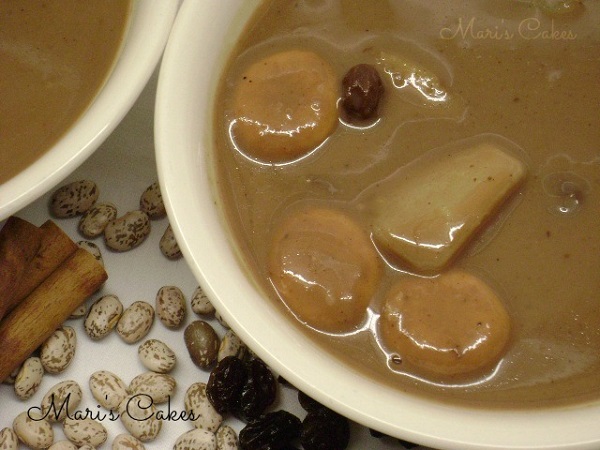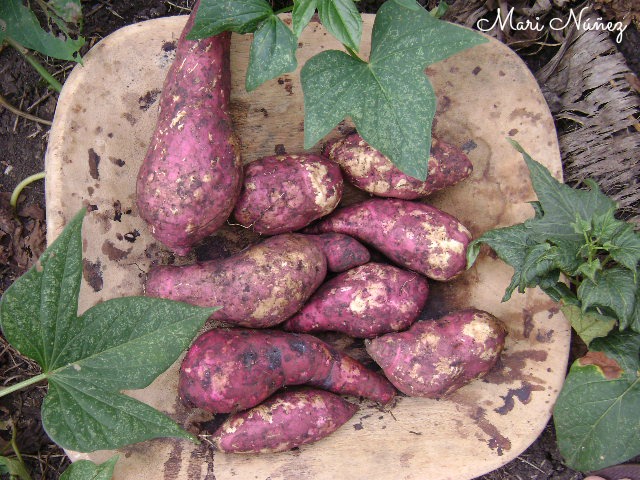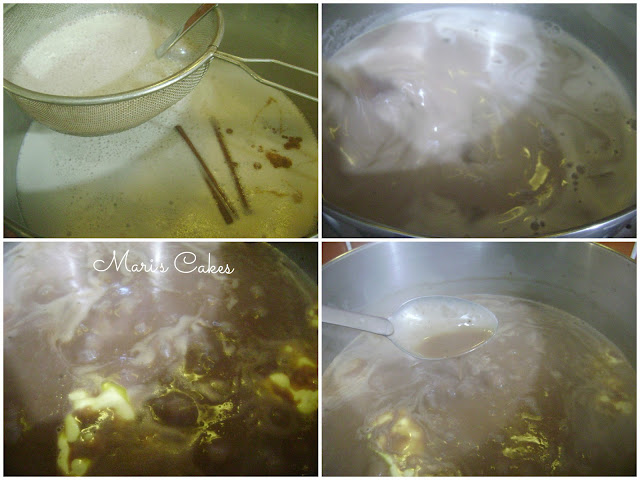The habichuelas con dulce, also known as sweet cream of beans or sweet beans, is a quintessential Dominican dessert. It's a tradition to prepare it during Lent, particularly Holy Week, in Dominican households.
Each family imbues their sweet beans with a unique touch, and I strive to recreate the flavor of my mother's version by incorporating freshly ground nutmeg and ginger. While some opt for canned beans, evaporated, and condensed milk, I prefer the traditional approach, using whole milk and beans, reminiscent of our grandmothers' recipes, for an unparalleled taste experience. This dish is delicious and unique and a symbol of Dominican culinary heritage.
Sweet crackers used for this recipe.
Some Batatas from our farm.
Habichuelas con Dulce (Dominican Sweet Beans)
Authentic Dominican Habichuelas con Dulce: A Sweet Tradition for Lent. this serves 12-15 servings approximately. You can easily reduce this recipe to half if less serving is preferred. Get a PDF with the recipe for 6 servings: PDF recipe.
Ingredients:
- 2 ½ cups (1 pound) red or pinto DRY beans, measure then cook, step#1
- 2 cinnamon sticks
- ½ teaspoon of ground cloves or to taste
- ½ teaspoon of ground cinnamon or to taste
- 1 teaspoon freshly ground nutmeg
- 2 ounces of fresh ginger mashed or ½ teaspoon of ground ginger (powder)
- 5 cups of whole milk (may be substituted with evaporated milk)
- 1 can (13.5 oz = 2 cups) of coconut milk or fresh milk of one coconut
- 1 teaspoon of salt
- 3 cups sugar or to taste
- 2 Tablespoons margarine or butter
- 2 pounds of boniato (batata) peeled, cut into squares, and boiled
- 1 cup of raisins
- Sweet crackers, galletas de leche de Guarina (as much as you like)
1. Measure the dry beans, clean them by picking out any small rocks or leaves, and wash the beans. Cook the beans until soft in approximately 2-3 liters of water, enough to cover them. I use three liters (approx. 13 cups). This takes about 2 hours in a regular pot or 30 minutes in a pressure cooker.
If you have time, a tip to soften the beans faster is to soak the dry beans in water overnight. The next day, drain the water from the beans and then bring them to a boil with the amount of fresh water I indicate and cook until they are tender. This step is recommended but not needed. I have made great habichuelas con dulce without soaking the beans the night before.
2. Once beans are soft, blend them with the water they were cooked in (approx. 8 cups) and strain the mixture twice, adding a little milk if necessary to facilitate straining, and strain it over the pot where you will cook it.
3. Combine the milk and coconut milk, stirring well. Add in the sugar, salt, and all the spices except for the nutmeg.
4. Bring the mixture to a boil over high heat, stirring constantly with a wooden spoon for approximately 15-20 minutes (less time may be required if using a large pot). Reduce the heat, then add the pre-cooked sweet potatoes cut into cubes, along with the raisins. Simmer for an additional 10 minutes or until the mixture thickens slightly.
5. Just before removing from heat, stir in the butter and 1 teaspoon of ground nutmeg, allowing it to cook for an additional 5 minutes.
6. After cooling off for at least 15 minutes, serve and top the serving dish with sweet crackers. Refrigerate once cooled and serve either hot or cold.
Notes:
a) In step #2, if you prefer it ok to strain the mixture only once.
b) I've suggested using 3 cups of sugar for this quantity of sweet beans, as I prefer a less sweet taste. Adjust the sugar amount to your liking.
b) For further inquiries and additional information about this recipe, refer to the article "Sweet Beans, Habichuelas con Dulce."
And he died for all, that those who live should no longer live for themselves but for him who died for them and was raised again. ~ 2 Corinthians 5:15






.jpg)











Keep in touch